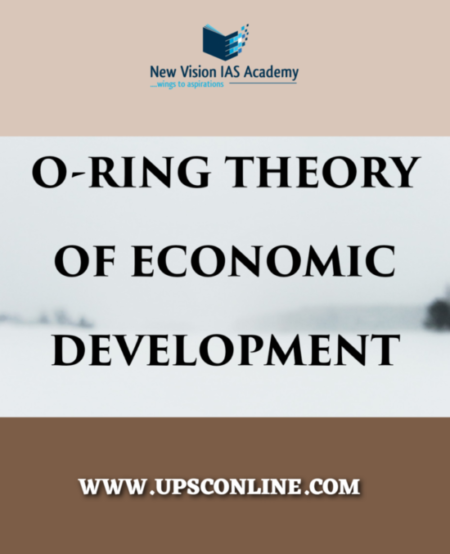O-RING THEORY OF ECONOMIC DEVELOPMENT
Michael Kremer formulated the O-ring theory in his article, “The O-ring Theory of Economic Development,” published in the Quarterly Journal of Economics.
It presents a production function in which production consists of many tasks, all of which must be successfully completed for the product to have full value.
The O-Ring Theory owes its name to the National Aeronautics and Space Administration disaster in 1986, involving the space shuttle Challenger. The high temperature at which the shuttle was launched, which caused it to explode.
“O-ring” theory of development (Kremer, 1993),explains that within a single production process involving multiple interdependent sub-processes.
Workers can boost their productivity by matching themselves with other workers of comparable skill. A failure or defect in any single sub-process or component would render the value created by others null and void. Hence, to maximize the returns to one’s own skills, one seeks out others able to match one’s skills, i.e. to produce inputs of requisite quality.
This is a sort of skill-clustering that may or may not but often does have a geographic dimension as well. Software development would appear to fit well this process description, where any individual who writes faulty code at any stage in the development of a programme threatens to devalue the entire product.
Kremer said that in production processes involving several tasks of different complexities, the skill levels of workers involved in those tasks become important. Because workers with differential skill levels have different likelihoods of making mistakes. Such errors, made especially by workers with lower skill levels, can turn an entire product worthless.
If the O-ring theory is true, the more complex the production process, the costlier each mistake. This is because where they use large amounts of capital and complex production processes, the less skilled workers, with their greater propensity to make mistakes, would lead to such capital getting wasted.
Such firms will then employ less physical capital. A combination of low physical capital and low skilled workers would mean lower output and lower wages as compared to that within large corporates or those of developed countries that use higher value inputs. Kremer further posits that bottlenecks of all kinds increase the disincentives to invest in skills.
www.upsconline.com



0 Comments